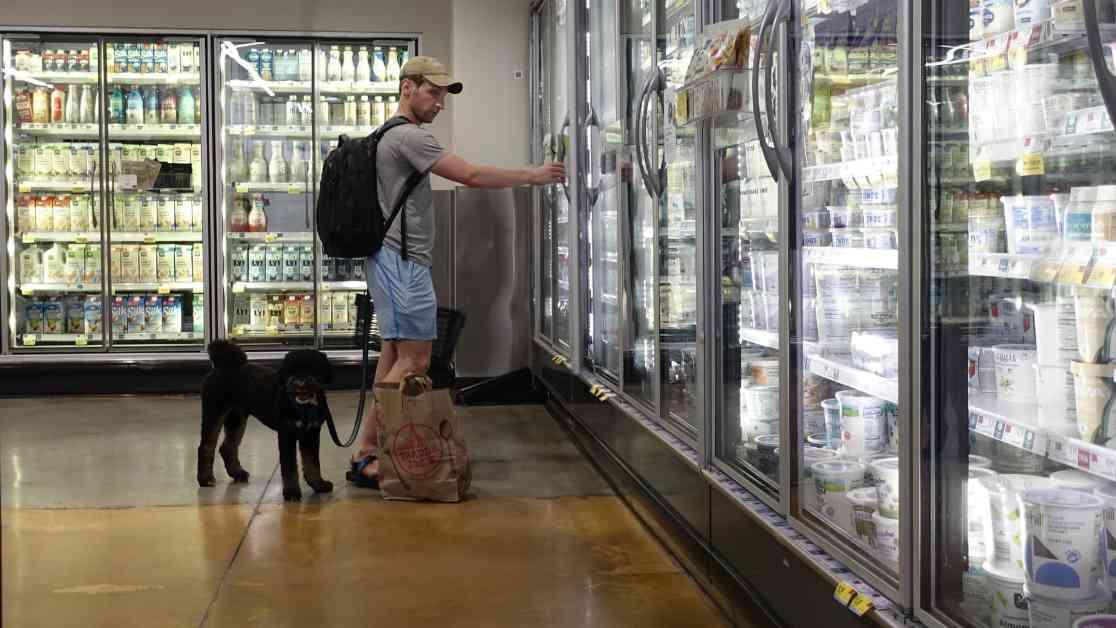Inflation in July saw a slight uptick, according to a key measure favored by the Federal Reserve, as the central bank gears up to implement its first interest rate reduction in over four years. The Commerce Department’s report released on Friday revealed that the personal consumption expenditures price index (PCE) rose by 0.2% for the month, aligning exactly with the Dow Jones consensus estimates. On a year-over-year basis, the index was up by 2.5%, mirroring the same period from the previous year.
The core PCE, which excludes volatile food and energy prices, also increased by 0.2% for the month and was up by 2.6% from a year ago. This 12-month figure was slightly softer than the 2.7% estimate. Fed officials often place more emphasis on the core reading as it provides a better indication of long-term trends. Both core and headline inflation on a 12-month basis remained the same as in June.
Core prices, excluding housing, another crucial metric for the Fed, saw a modest increase of just 0.1% for the month. Despite other inflation components easing, shelter costs have proven to be stubborn, rising by 0.4% in July according to the latest report. The Bureau of Economic Analysis, part of the Commerce Department, also noted that personal income increased by 0.3%, slightly higher than the 0.2% estimate. Additionally, consumer spending rose by 0.5%, in line with forecasts. Despite the rise in consumer spending, the personal savings rate fell to 2.9%, the lowest since June 2022.
In terms of components, inflation remained relatively stable over the past month. Goods prices experienced a marginal decline of less than 0.1%, while services increased by 0.2%. On a 12-month basis, goods prices also saw a slight decrease of less than 0.1%, while services surged by 3.7%. Food prices rose by 1.4% and energy costs accelerated by 1.9%.
Market reactions to the news were relatively muted, with equity futures pointing to a slightly higher open on Wall Street and Treasury yields also showing an increase. Chief economist at RSM, Joseph Brusuelas, noted that the data indicates a re-establishment of price stability across the American economy. He further commented that the American economy is poised for growth at or above the long-term rate of 1.8% as the Fed embarks on its rate-cutting campaign, which is expected to provide support for growth and hiring.
As the markets price in a 100% chance of a rate cut in September, the focus now shifts to the extent of the potential rate reduction. Will the Fed opt for a quarter-point cut or a more aggressive half-point reduction? Following the release of the report, market pricing leaned towards a quarter-point reduction, lowering the probability of a half-point move to 30.5%, according to the CME Group’s FedWatch gauge.
Chair Jerome Powell and other policymakers have expressed confidence that inflation is moving towards the Fed’s 2% target. The central bank is anticipated to shift its focus from primarily addressing inflation to also supporting the labor market. Despite the low unemployment rate of 4.3%, which has been trending higher over the past year, there are indications of a slowdown in hiring and a perception among workers that job opportunities are becoming scarcer.
Looking ahead, all eyes will be on the upcoming nonfarm payrolls report for August, scheduled for release in a week. Projections from FactSet suggest an increase of approximately 175,000 jobs. This report will provide further insights into the state of the labor market and its implications for the broader economy.

















